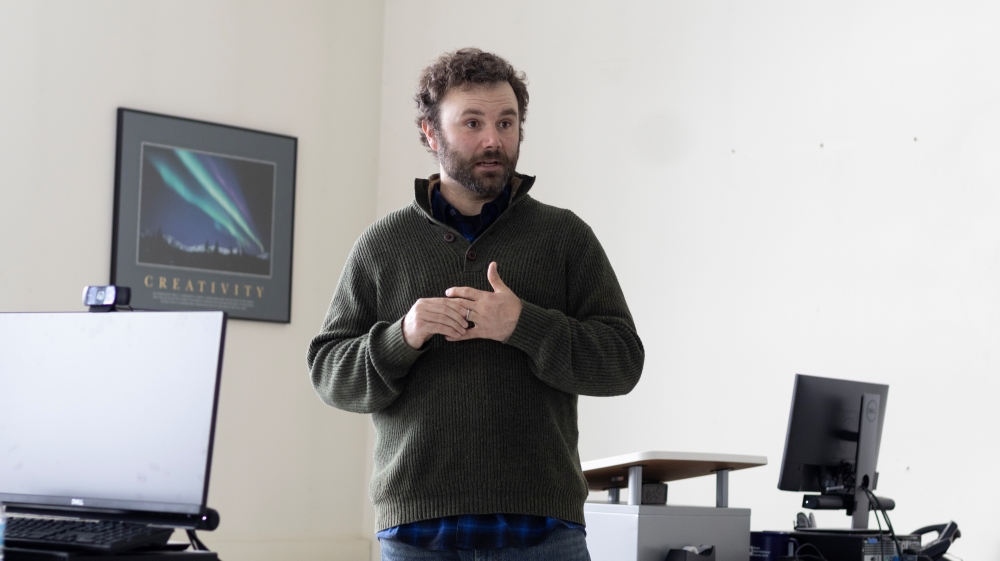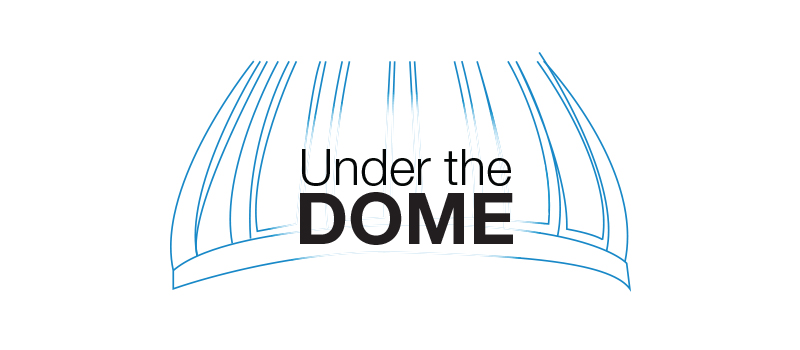When students step onto the campus of one of Maine’s seven community colleges, they bring a diverse range of backgrounds and experiences. Some are still in high school, taking advantage of dual enrollment programs. Others are recent high school graduates benefiting from the free community college tuition program, and many are mid-career adults returning to school to further their job training or make a career transition.
Faculty at Maine’s community colleges face the unique challenge of teaching this diverse student body with varying goals, aspirations, and ages. They provide educational opportunities for thousands of Mainers each year.
Our jobs can look completely different depending on a number of factors: macro-economic conditions, political environment, enrollment numbers, and the demographics of our student body.
Mike Tardiff
English Faculty member at KVCC
Despite the essential role they play, community college faculty often face significant challenges. They must constantly adapt to the evolving demographics of their student body and the demands of Maine’s labor market.
Diverse Student Body and Unique Challenges
“Our jobs can look completely different depending on a number of factors: macro-economic conditions, political environment, enrollment numbers, and the demographics of our student body,” explains Mike Tardiff, an English faculty member at Kennebec Valley Community College (KVCC) in Fairfield, Maine.
Tardiff faces the unique tasks of teaching a diverse population of learners from various majors.. This adds the challenge of teaching students with a range of skills and differing interests. In one writing course, Tardiff may see students from a local high school combined with those enrolled in culinary, welding, electrical, and other programs—all who will use writing in different ways throughout their careers.
In early December, as Tardiff’s class was finalizing their writing projects, three students were absent due to a snow day at their high school. As a result, Tardiff had to quickly modify his lesson to ensure the absent students would not fall behind, while continuing to support those present. This is one of many situations that highlight how community college faculty must constantly adapt to the varying demands of their students.
Addressing Workforce Needs and Faculty Resilience
Prior to 2022, Maine’s community college system struggled with declining enrollment, leading to cuts in faculty positions. However, according to Dr. Shari Ward, President of the Community College Faculty Association (CCFA), positions have not been added since enrollment has surged in recent years.
This year, the system enrolled over 20,000 students across the state’s seven community colleges, with nearly half of the degree-seeking students benefiting from Maine’s free community college program instituted in 2022.
The system’s flexibility is a key factor in its ability to address Maine’s workforce challenges. It offers a wide range of programs, from two-year associate degrees and one-year certificates to short-term workforce training, early college programs, advanced certificates, and specialized skills training. However, this flexibility also requires faculty to adapt to diverse student populations with varied goals and experiences.
Everything is constantly evolving at the community college level. Our fields, curriculum, and student body are all changing, but tuition remains the same.
Jeff Godin
Precision Machine Instructor KVCC
Navigating Enrollment and Staffing Challenges
Maine’s 354 community college faculty have been instrumental in navigating record-high enrollment while facing instructor and staff shortages. This has led to increased workloads and additional responsibilities. In some cases, faculty—who sometimes serve as departments of one—have been forced to teach several extra classes per semester because they are frequently unable to find qualified adjuncts.
While the community college landscape is constantly changing, one thing remains constant: the adaptability of its faculty and staff.
Jeff Godin, a longtime instructor in precision machining at KVCC, notes, “Everything is constantly evolving at the community college level. Our fields, curriculum, and student body are all changing, but tuition remains the same.”
Tardiff and Godin say it is not unusual to see a range of students’ ages in their courses, from high school students enrolled in dual and concurrent enrollment courses to mid-career adults looking to further their education.
Thousands of high school students earn college credit through dual-enrollment programs at Maine’s community colleges. “Our student body is economically and demographically diverse,” Tardiff explains. “We serve first- and second-year college students due to the increase in demand related to the free community college program. We also serve a large veteran population, and thousands of dual enrollment students each year.”
The most rewarding thing is watching students accept their credential at commencement. Because you know, for many of those folks, that degree or certificate is their ticket to life-changing earning potential and, as importantly, a more fulfilling life.
Mike Tardiff
English faculty member at kvcc
Maine’s recent free community college program has noticeably lowered the average age of students. The system reports that the average age is currently 24, with 71% of students under 24—compared to 54% in 2022.
According to Tardiff and Godin, while enrollment has increased, resources have not kept pace. Tardiff notes that he is much more likely to accept students above and beyond his course cap to meet the increased demand for courses.
While we look to Maine’s community colleges to train the next generation of workers and expand Maine’s skilled workforce to help address the challenges of being the oldest state in the nation, it is important to recognize that the community college system is not immune to workforce recruitment and retention challenges.
Faculty burnout is also a growing concern. Tardiff and Godin say the average faculty member stays for around 10 years, but when a faculty member leaves or retires, it is increasingly difficult to replace them. This is partly because it is difficult to recruit and retain staff, particularly from the technical fields.
Godin notes that the system has been unable to replace a precision machining instructor at York County Community College for over a year, which in turn puts strain on the other precision machining programs, like his at KVCC. “It can be difficult to find instructors, especially for the trades,” says Godin, “which in turn makes it difficult to meet the demand for graduates in high-demand, high-skilled fields.”
Maine’s community college system is uniquely positioned to address the state’s workforce challenges and increase access to higher education. With a diverse student body, faculty are constantly finding ways to adapt to meet the unique needs of each learner—ultimately empowering students to achieve their academic and career goals and helping to shape the economic future of Maine.
Despite the increasing demands, community college faculty continue to rise to the challenge, demonstrating a remarkable capacity for innovation and resilience. A prime example of this was their swift adaptability when forced to pivot to remote education during the COVID-19 pandemic.
While this transition posed unique challenges, particularly for hands-on and experiential courses, faculty engaged with new technology and explored creative teaching methods—ultimately expanding the possibilities for student learning.
By adapting to changing circumstances and embracing new technologies, faculty are helping to shape the future and expand access to higher education for thousands of Mainers.
“The most rewarding thing is watching students accept their credential at commencement,” Tardiff says, “because you know, for many of those folks, that degree or certificate is their ticket to life-changing earning potential and, as importantly, a more fulfilling life.”
Maine Community College Highlights
→Student average age 24 years old.
→94% of Mainers live within 25 miles of one of the seven Community College Campuses!

Maine Community College Enrollment
| Year | Enrollment |
|---|---|
| 2019 | 17,326 |
| 2020 | 15,947 |
| 2021 | 15,004 |
| 2022 | 16,792 |
| 2023 | 19,477 |
| 2024 | 21,385 |







